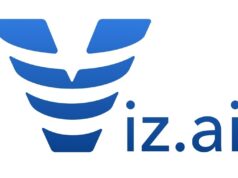
Initial results of the PULSED AF trial, the first-in-human results for paroxysmal or persistent atrial fibrillation (AF) treated with pulsed field ablation (PFA) were presented online as part of a late breaking clinical trial session at Heart Rhythm 2020. According to the study’s authors, the trial demonstrates the safety and efficiency benefits of using PFA to target abnormal heart rhythms through pulmonary vein isolation (PVI).
“As ablation technology evolves, we saw the opportunity to improve upon the procedure to treat this growing patient population,” said lead author Atul Verma, Southlake Regional Health Center, (Toronto, Canada) commenting on the findings. “For benefits of using a unique, nonthermal energy source to address safety concerns associated with ablation. We look forward to seeing how this technological innovation will move the electrophysiology field forward in advancing this crucial solution and reducing the impact of persisting AF.”
PULSED AF is a non-randomised, prospective, multi-centre, global, pre-market clinical study performed in Australia, Canada, United States and Europe. The study evaluates the Medtronic PulseSelectTM system, a PFA system that delivers bipolar, biphasic pulsed electric fields through a circular multi-electrode array catheter to perform PVI.
The patients included were undergoing first-time ablation for either paroxysmal or persistent AF (less than one year). The study endpoints include AF recurrence >30 seconds and procedural safety. AF monitoring is being performed by weekly trans-telephonic transmission and intermittent Holters at six and 12 months. Patients will ultimately be followed for 12-months post-ablation.
Results of the PULSED AF study suggest that PFA delivers ablation as effective as RF ablation, while providing a safer and more efficient procedure. Results show acute electrical isolation was achieved in 100% of patients to-date and there were no tamponades, strokes or phrenic nerve injuries. Upon conclusion, the study will report the rate of arrhythmia-free survival at 12 months, and prespecified secondary and ancillary endpoints, including: procedural outcomes, quality of life and arrhythmic symptoms.
The authors of the study point to a future presentation of full, 12-month patient follow-ups results. This trial will be followed by FDA submission for an international, pivotal trial to provide additional clinical data.











